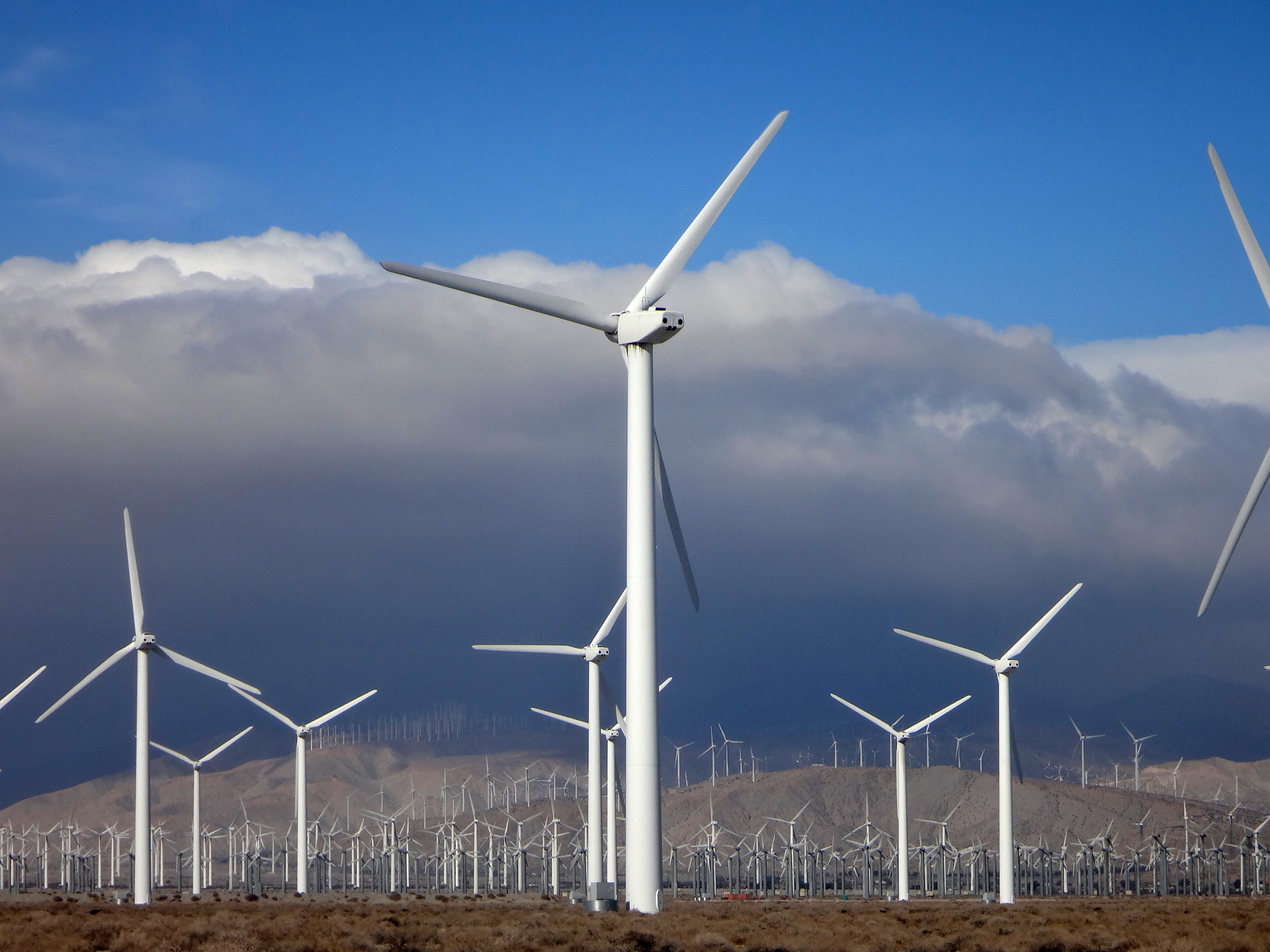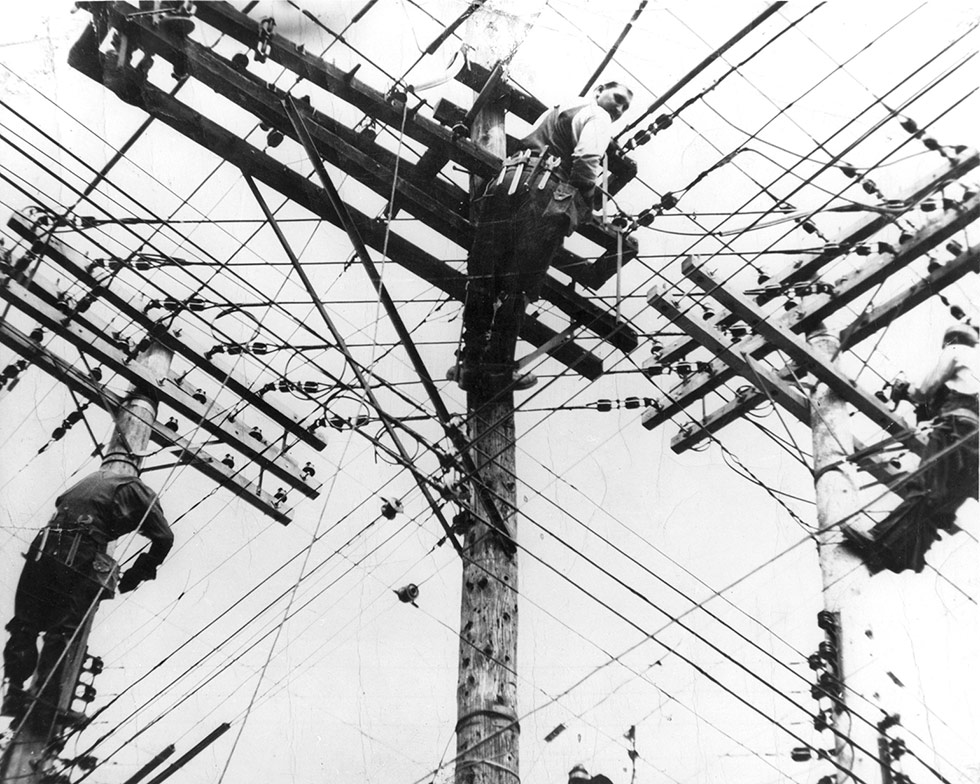|
Saint-Robert-Bellarmin Wind Project
The Saint-Robert-Bellarmin Wind Project is a wind farm in the municipality of Saint-Robert-Bellarmin, Quebec in Canada. It has been in commercial operation since October 16, 2012. It has 40 wind turbines, each of 2 MW power, for a total capacity of 80 MW. It delivers energy to Hydro-Québec Hydro-Québec is a public utility that manages the generation, transmission and distribution of electricity in the Canadian province of Quebec, as well as the export of power to portions of the Northeast United States. It was established by the .... The wind project was developed and is owned by EDF EN Canada Inc. It is operated and maintained by REpower Systems Inc. and EDF Renewable Services Inc. See also * List of wind farms in Canada References Buildings and structures in Gaspésie–Îles-de-la-Madeleine Wind farms in Quebec {{Canada-powerstation-stub ... [...More Info...] [...Related Items...] OR: [Wikipedia] [Google] [Baidu] |
Wind Farm
A wind farm or wind park, also called a wind power station or wind power plant, is a group of wind turbines in the same location used Wind power, to produce electricity. Wind farms vary in size from a small number of turbines to several hundred wind turbines covering an extensive area. Wind farms can be either onshore or offshore. Many of the largest operational onshore wind farms are located in China, India, and the United States. For example, the List of onshore wind farms, largest wind farm in the world, Gansu Wind Farm in China had a capacity of over 6,000 megawatt, MW by 2012,Watts, Jonathan & Huang, CecilyWinds Of Change Blow Through China As Spending On Renewable Energy Soars ''The Guardian'', 19 March 2012, revised on 20 March 2012. Retrieved 4 January 2012. with a goal of 20,000 MWFahey, JonathanIn Pictures: The World's Biggest Green Energy Projects ''Forbes'', 9 January 2010. Retrieved 19 June 2019. by 2020.Kanter, DougGansu Wind Farm ''Forbes''. Retrieved 1 ... [...More Info...] [...Related Items...] OR: [Wikipedia] [Google] [Baidu] |
Saint-Robert-Bellarmin, Quebec
Saint-Robert-Bellarmin is a municipality in the Municipalité régionale de comté du Granit in Estrie, Quebec, Canada, located on the Canada–United States border. Population is 529 as of 2021. It is also the location of the Saint-Robert-Bellarmin Wind Project, an 80 MW project located 3 km East-South-East of the town. The area had already been settled in 1907. The local economy revolves mostly around lumber, sugar bushes and the seasonal deer hunt. Many ''Bellarminois'' work in neighbouring Saint-Gédéon-de-Beauce. The municipality was named after Robert Bellarmine, an Italian Jesuit who participated actively in the Counter-Reformation. Geography The territory of Saint-Robert-Bellarmin is equidistant from Saint-Gédéon-de-Beauce, to the north, and Saint-Ludger, to the west, from which it is a dozen kilometers away, Saint-Robert-Bellarmin is bounded in its southern part by the border which separates Quebec of Maine. The rivière du Loup Rivière, La Rivière, ... [...More Info...] [...Related Items...] OR: [Wikipedia] [Google] [Baidu] |
Quebec
Quebec ( ; )According to the Canadian government, ''Québec'' (with the acute accent) is the official name in Canadian French and ''Quebec'' (without the accent) is the province's official name in Canadian English is one of the thirteen provinces and territories of Canada. It is the largest province by area and the second-largest by population. Much of the population lives in urban areas along the St. Lawrence River, between the most populous city, Montreal, and the provincial capital, Quebec City. Quebec is the home of the Québécois nation. Located in Central Canada, the province shares land borders with Ontario to the west, Newfoundland and Labrador to the northeast, New Brunswick to the southeast, and a coastal border with Nunavut; in the south it borders Maine, New Hampshire, Vermont, and New York in the United States. Between 1534 and 1763, Quebec was called ''Canada'' and was the most developed colony in New France. Following the Seven Years' War, Quebec b ... [...More Info...] [...Related Items...] OR: [Wikipedia] [Google] [Baidu] |
Canada
Canada is a country in North America. Its ten provinces and three territories extend from the Atlantic Ocean to the Pacific Ocean and northward into the Arctic Ocean, covering over , making it the world's second-largest country by total area. Its southern and western border with the United States, stretching , is the world's longest binational land border. Canada's capital is Ottawa, and its three largest metropolitan areas are Toronto, Montreal, and Vancouver. Indigenous peoples have continuously inhabited what is now Canada for thousands of years. Beginning in the 16th century, British and French expeditions explored and later settled along the Atlantic coast. As a consequence of various armed conflicts, France ceded nearly all of its colonies in North America in 1763. In 1867, with the union of three British North American colonies through Confederation, Canada was formed as a federal dominion of four provinces. This began an accretion of provinces an ... [...More Info...] [...Related Items...] OR: [Wikipedia] [Google] [Baidu] |
Hydro-Québec
Hydro-Québec is a public utility that manages the generation, transmission and distribution of electricity in the Canadian province of Quebec, as well as the export of power to portions of the Northeast United States. It was established by the Government of Quebec in 1944 from the expropriation of private firms. This was followed by massive investment in hydro-electric projects like the James Bay Project. Today, with 63 hydroelectric power stations, the combined output capacity is 37,370 megawatts. Extra power is exported from the province and Hydro-Québec supplies 10 per cent of New England's power requirements. Hydro-Québec is a Crown corporation (state-owned enterprise) based in Montreal. In 2018, it paid CAD$2.39 billion in dividends to its sole shareholder, the Government of Québec. Its residential power rates are among the lowest in North America. More than 40 percent of Canada’s water resources are in Québec and Hydro-Québec is the fourth largest hydropower produ ... [...More Info...] [...Related Items...] OR: [Wikipedia] [Google] [Baidu] |
List Of Wind Farms In Canada
This is a list of operational wind farms in Canada with a capacity of at least 100 MW. The name of the wind farm is the name used by the energy company when referring to the farm. The Centennial Wind Power Facility in Saskatchewan was the first wind farm in Canada to have a capacity of at least 100 MW upon completion in 2006. Since then numerous other wind farms have surpassed the 100 MW threshold, most often through the expansion of existing wind farms. All but two of Canada's provinces or territories are home to at least one wind farm, those without being Nunavut and the Northwest Territories. Largest wind farms The 363.5 MW Seigneurie de Beaupré Wind Farms in Quebec has been the largest wind farm by installed capacity in Canada since it was last expanded in October 2015 from 340 MW to 363.5 MW. The previous record-holder was the 350 MW Rivière-du-Moulin Wind Project in Quebec from its opening in December 2014 to September 2015. By province or territory Listed below i ... [...More Info...] [...Related Items...] OR: [Wikipedia] [Google] [Baidu] |
Buildings And Structures In Gaspésie–Îles-de-la-Madeleine
A building, or edifice, is an enclosed structure with a roof and walls standing more or less permanently in one place, such as a house or factory (although there's also portable buildings). Buildings come in a variety of sizes, shapes, and functions, and have been adapted throughout history for a wide number of factors, from building materials available, to weather conditions, land prices, ground conditions, specific uses, prestige, and aesthetic reasons. To better understand the term ''building'' compare the list of nonbuilding structures. Buildings serve several societal needs – primarily as shelter from weather, security, living space, privacy, to store belongings, and to comfortably live and work. A building as a shelter represents a physical division of the human habitat (a place of comfort and safety) and the ''outside'' (a place that at times may be harsh and harmful). Ever since the first cave paintings, buildings have also become objects or canvasses of much artistic ... [...More Info...] [...Related Items...] OR: [Wikipedia] [Google] [Baidu] |




